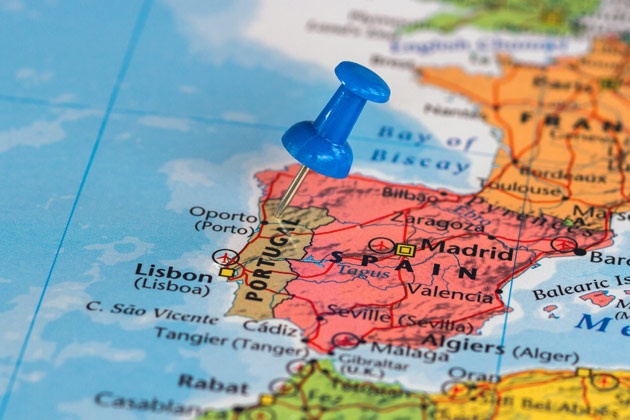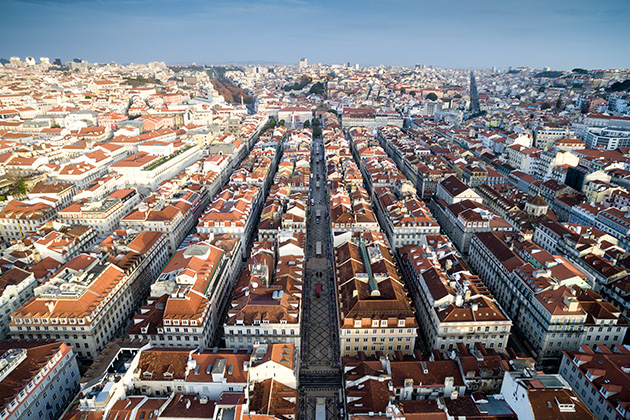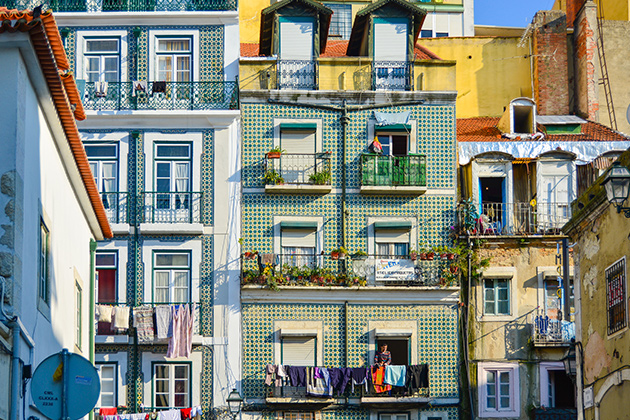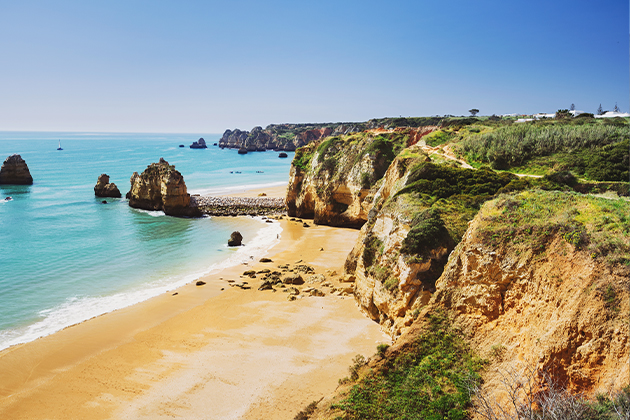
The guide to the best beaches in Portugal takes you from the coldest waters to the warmer, from north to south. There are plenty of them and in common they share beauty, a diversity of landscapes and great conditions for sea sports, especially surfing, which has become a fixture on our coastline.
Best beaches in Portugal – in the north:
Moledo Beach
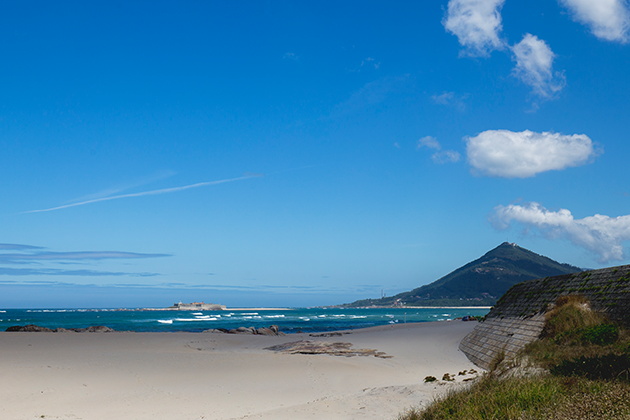
Located in Caminha, in the Minho region, it boasts views of Ínsua Island and the Santa Tecla hill and fortress from the sand. It is often regarded as the best beach in the North of Portugal, due to its natural beauty and its therapeutic qualities, which derive from the presence of iodine. It has ideal conditions for water sports such as surfing and bodyboarding and is a favourite haunt for surfers.
Cabedelo Beach
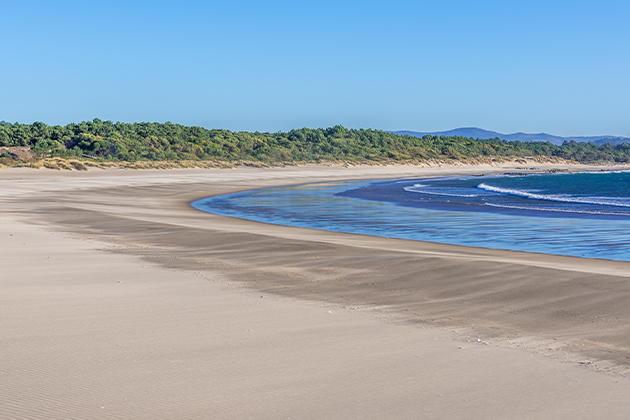
Also in the Minho, in Viana do Castelo, on the south margin of the Lima River estuary, we find this haven for windsurfing and kitesurfing, which has hosted the largest windsurfing competition in the world, the PWA Grand Slam, drawing crowds of fans and athletes. The beach is known for its tranquil waters, and although windy it is very family friendly.
Afife Beach
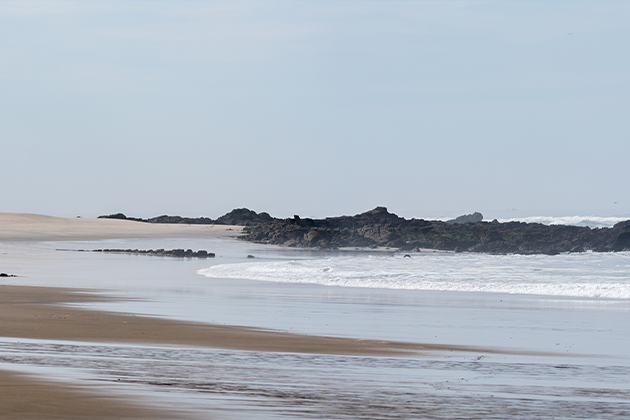
This beach has been flying the blue flag, meaning that it has clean waters, for close to 40 years. Indeed, it’s waters are known for being the cleanest in the region, just outside Viana do Castelo, in the Minho. The water is cold, but that doesn’t scare off the myriad of surfers and bodyboarders, and the scenery is breath-taking.
Other beaches in the north:
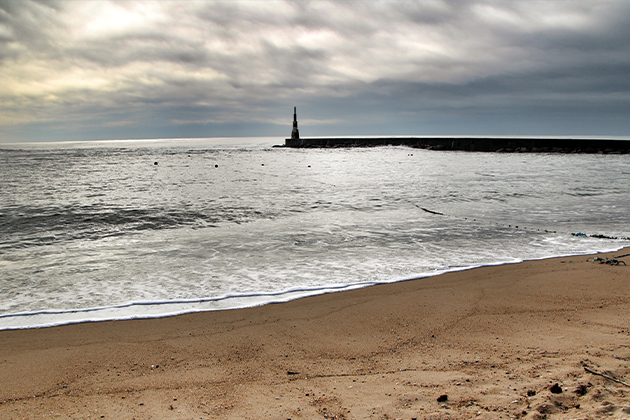
Off the grid and therefore less accessible, you might like to check out Moreiró, with its extensive sand beach and blue sea, in Labruge, Vila do Conde. Surfers will also enjoy the Sereia beach in Espinho, a favourite for wave-riders due to the great waves it gets. A little further down, in Arcozelo, Vila Nova de Gaia, you can visit Aguda beach and watch the fishing boats roll in at the end of the day, fulfilling an ancient tradition.
Best beaches in Portugal – in the centre:
São Jacinto beach
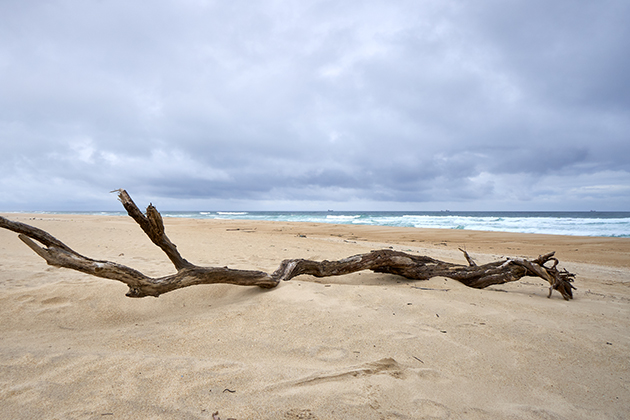
Located in Aveiro, in the heart of the Dunas de São Jacinto Nature Reserve, this beach is a natural paradise, very quiet and boasting a long wooden boardwalk. The beach is often deserted and is a great choice if you’re looking to relax and get away from the bustle of the big cities.
Praia do Norte
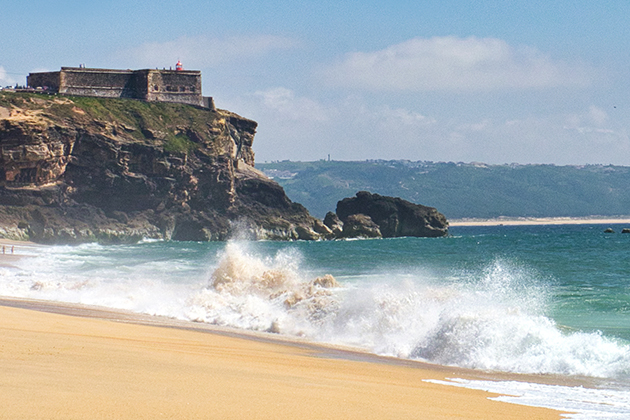
Located to the north of Nazaré, Praia do Norte [northern beach] became famous after big wave surfer Garrett McNamara rode a 30 metre wave, formed by the famous Nazaré canyon. The waves tend to be big and very powerful, and the currents are strong and dangerous, making the sea spectacular to look at, but risky.
São Martinho beach
Located in Alcobaça, São Martinho beach is on the inside of a delightful bay, with a long stretch of sand and generally calm seas. The spectacular dunes are preserved by the construction of wooden boardwalks. This is an ideal holiday destination for families, very popular among traditional Portuguese families.
Baleal beach
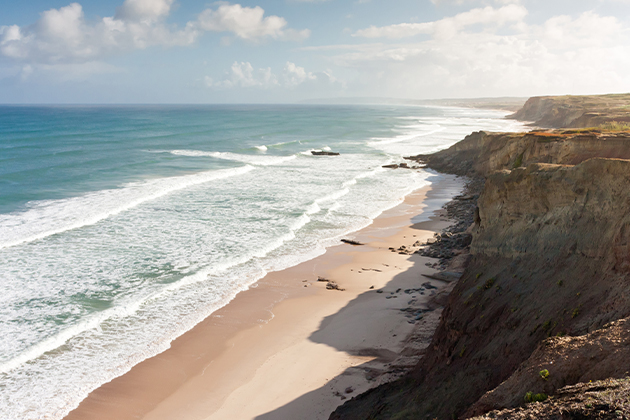
Baleal beach is very popular in Peniche, due to its potential for sea sports. The northern side is windier and has choppier sea, whereas the south side is calmer, especially in the summer, making it more inviting.
In Ericeira:
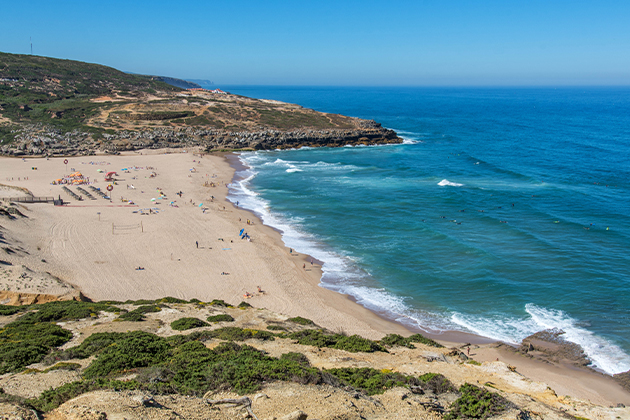
Located between Ericeira and Santo Isidoro, Ribeira d’Ilhas beach is famous for hosting a leg of the world surfing competitions. Its natural beauty makes a visit worth the while, and it is busy all year because of the amount of surfers who go there looking for waves. If you are looking for something more isolated and quiet, Foz do Lizandro beach, with its fine white sand, is just four kilometres outside of Ericeira, but be careful, because the river mouth makes for some treacherous currents.
In Sintra:
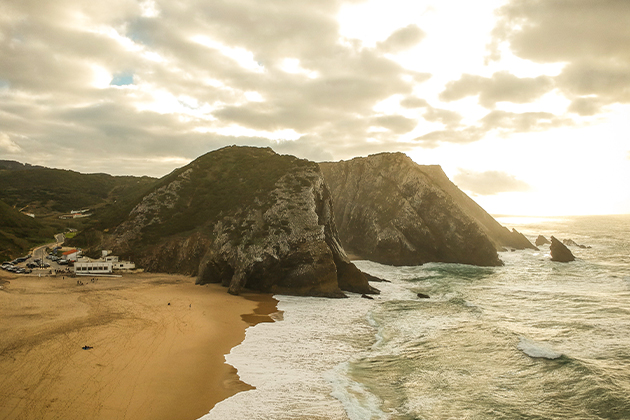
There are plenty of beaches worth visiting in Sintra. One of the most famous is Praia Grande [Big Beach], a favourite for surfers and bodyboarders and home to a yearly bodyboarding world competition. The hotel next to the long beach has an oceanic pool.
Nearby, but hidden amongst rocks and cliffs, Adraga beach has been considered one of the top 20 beaches in Europe by the Sunday Times. Just a little further north you’ll find Magoito, with long stretches of sand and tucked into a valley, it is one of the beaches in Europe with the highest concentration of iodine. The health benefits make it popular for families with children, and it is a great choice if you’re in the area.
Best beaches in Portugal – in the south:
In Costa da Caparica:
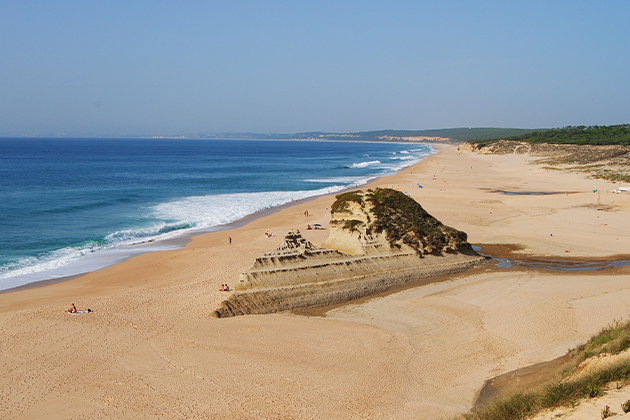
As you go further south it gets harder to decide which beaches are better, given the quality and the quantity you have to choose from. Beginning in the Costa da Caparica, just across the river from Lisbon, Sereia beach is one of last on the long stretch of sand which goes all the way to Fonte da Telha. With excellent services, it is ideal for those who like to eat or drink right on the beach and is also home to many night parties in the summer. Also, just beside Aldeia do Meco, you’ll find Meco beach, sheltered by cliffs and a pine forest and a preferred destination for nudists.
In Arrábida:
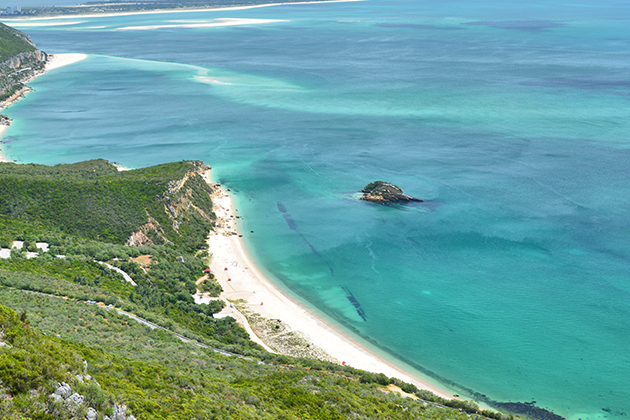
Porto da Baleeira, or Paraíso beach, as it is also known, is located in Sesimbra and is the first wild beach after the Espichel Cape. The setting is marvellous, located in a small bay. When the tide comes in only a blanket of rocks is left for beach goers, many of whom choose this beach to go diving for the first time.
And then, of course, there is the Portinho da Arrábida beach, in Setúbal, which was considered one of the 7 Natural Wonders of Portugal in the beaches and cliffs category. It is a rocky beach, bathed by very calm, albeit cold, water that boasts excellent visibility for diving. The green slopes of the Arrábida Hill make it all the more inviting for those who approach it from the sea.
On the Vicentine Coast:
Comporta beach
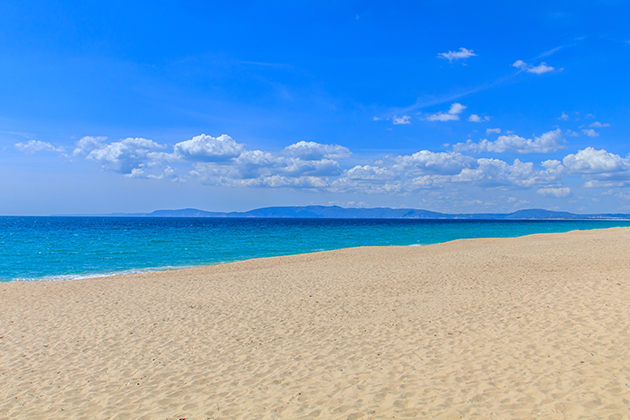
On the Vicentine coast the tour of the best beaches begins with Comporta. Part of the Sado Estuary Nature Reserve, and surrounded by dunes and pine forests, it has a large expanse of sand and is a favourite among surfers and kitesurfers.
Praia da Galé
Praia da Galé is located in Fontainhas, Melides, and is generally rather empty, making it a great choice if you’re looking to stretch out your towel and relax in peace. It is watched over by an orange hued cliff that has been featured on a postcard produced by the American Condé Nast Traveler magazine.
Machados beach
Just a couple of years ago you’d be sure to find it empty, but the increasing interest in wild and beautiful beaches has made what was once exclusive, less so. Nonetheless, Machados beach, in São Teotónio, Odemira, is protected by a high cliff that completely surrounds the sand and is well worth the visit, despite the fact that this implies a complicated descent down the cliff paths.
Carvalhal beach
Located in Odemira, Carvalhal beach is protected by a cove, surrounded by high cliffs that shield it from the wind, making for unforgettable beach days when the temperatures start rising. From there you can see the mouth of the Barranco do Carvalhal stream, flowing into the deep blue ocean.
Praia da Amália
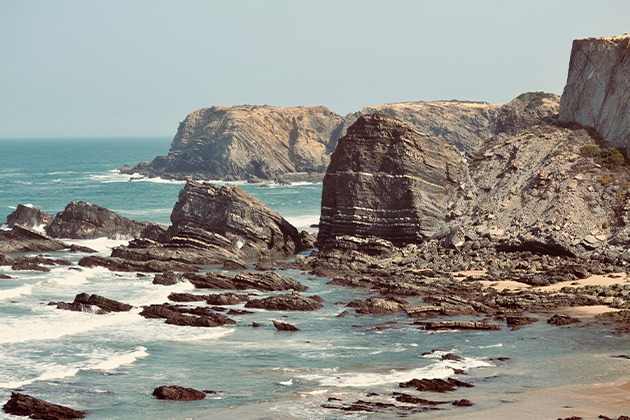
Named after the famous fado singer, who spent her holidays in the house just in front, it is also known as Brejão beach. The size of the sand expanses is determined by the tides, and high tide often swallows the beach up entirely. To the south there is a little stream that runs into the ocean, forming a waterfall that tends to catch visitors by surprise.
Monte Clérigo beach
Monte Clérigo beach, in Aljezur, is one of the most popular in the region, because of its incredible beauty. It is quite large, and the water is clear and cool. It also boasts a wealth of sea life and you’ll easily be able to spot schools of young fish, breams, sea stars, crabs, shrimp, limpets and octopus.
Arrifana beach
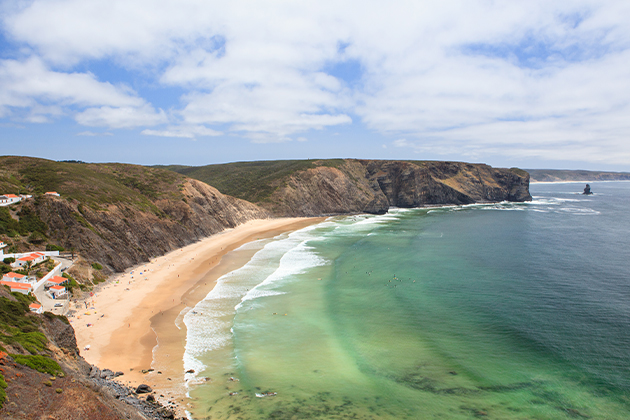
Arrifana beach is located in Aljezur, very close to the Arrifana fortress, at the end of a cove, protected by very high cliffs. It is one of the local surfing hotspots, and many surfers visit it when conditions are good. It used to be almost unknown to the general public, but it is currently quite popular among local holidaymakers.
Amado beach
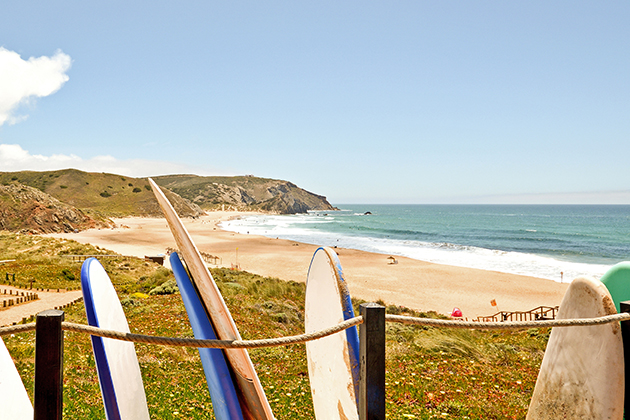
The scenery is breathtaking, but that’s not the only reason the Amado (which, incidentally, means Beloved, and deservedly so) is on this list. It is a very popular destination for surfers, but its waves are considered suitable both for the more experienced and the beginners. Several national and international competitions are held at this beach, which is one of the best the coast has to offer.
Salema beach
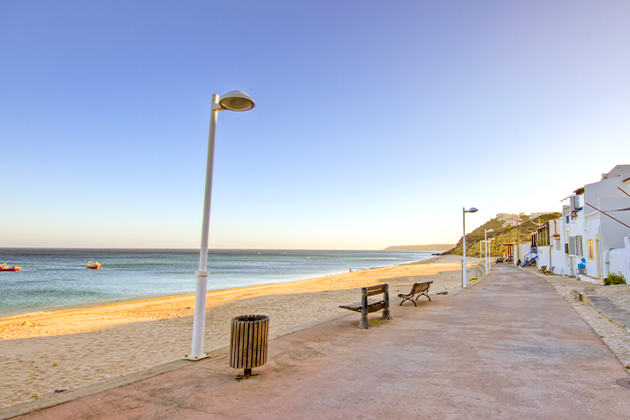
Besides the natural beauty that got it named one of the 50 most beautiful beaches in the world by The Guardian, Salema Beach enjoys some classic characteristics, including dinosaur footprints in the cliffs that are around 140 million years old. This is also a popular fishing port and, during the day, you can observe the fishermen going about their business.
Odeceixe
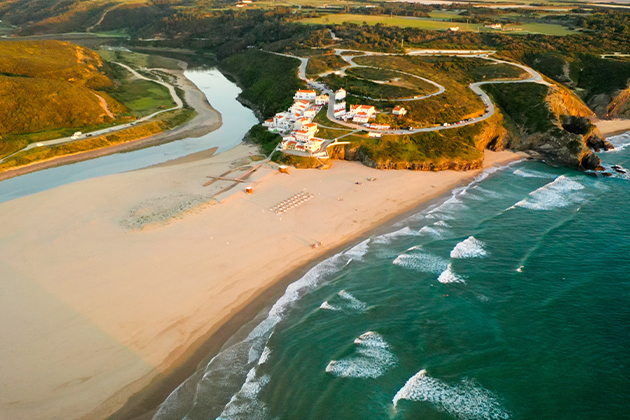
Flanked by the sea on one side and the Odeceixe stream on the other, this beach, with its wide expanse of sand, was ranked among the 7 Wonders of Portugal in 2012. We dare you to visit and not fall head over heels in love with the landscape.
In the Algarve:
Marinha beach
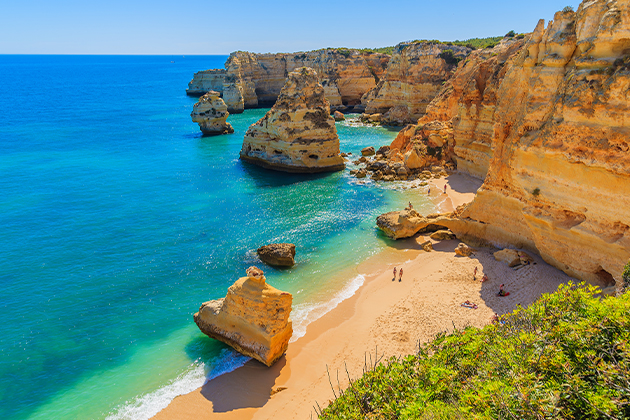
Blue and emerald-green waters, orange cliffs and rocks that rise up out of the ocean make this one of the most beautiful beaches in Portugal, or, according to the Condé Nast Traveler magazine, one of the most beautiful in all of Europe. It is located between Lagoa and Porches and, if you fancy an almost identical, but much more peaceful beach, check out Praia do Pau, next door.
Cabanas
This beach can only be reached by boat, from Cabanas de Tavira, and boasts expanses of white sand, warm waters and small waves, making it ideal for families. It is popular among windsurfers and sailors and was also ranked the best beach in Portugal by The Guardian, in 2013.
Praia Verde
Praia Verde is located between the beaches of Alagoa and Cabeço, in Castro Marim, between Altura and Monte Gordo. The beach is sheltered by a magnificent green pine forest, hence its name, that translates into “Green Beach”. It’s wide white sandy beach front leads down to warm, translucent, very peaceful and quiet waters, making it ideal for a relaxed vacation and to recover from the city bustle.
